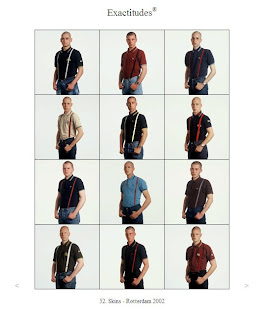
The lecturer, Gert Staal is a writer on design and architecture since early 80’s, staff-editor of major Dutch newspaper and has been a visiting teacher for master students in Design Academy since 2005.
In the first session, Mr. Staal emphasized on the importance of interview. Although some interviews might not be published or broadcasted for different reasons, they can deliver background information for a research project or an article. He gave some guides of interview to students. Towards the interview, the subject has to be recognized, a direction and a strategy have to be planed and a list of questions to be prepared. In between the interview and the writing, he advised students to take time, shortly after the interview, to ‘empty their memory’ and write down things that stood out, intrigued them or made them doubt. And tell them to identify the important themes in the conversation but also sidelines that might reveal an aspect of the personality. Finally, in order to put everything into a story, he advised to establish which elements are vital or necessary and to identify in what form the contents of the conversation to be represented. Regarding the writing, Mr. Staal made a point on the importance of using appropriate style and vocabulary.
From the participant’s point of view, it was a profound lecture on interviewing, especially it was interesting to hear how to get answers out of a reluctant interviewee, and what a good technique it is to empty your memory after the discussion and get everything you heard on paper. After preparing us for all the things that need to be considered when making an interview, we got an assignment. The class was put in three person groups in which there was an interviewer, interviewee and an observer. We got to put in practice all that we had learned. The results were promising, as Mr. Staal said. We managed to write some interesting texts in the very limited time.
The next session dealt with reportages and reviews. Mr. Staal proposed to students to practice on writing reportage which offers an editorial format that students might want to use in their thesis and the format necessarily combines ‘neutral’ representation of researched facts with personal perspective position. Moreover, as a journalistic tool its well suited for documenting research projects in a non-academic environment like Design Academy. In terms of the review, Mr. Staal stressed on that writing a review forces students to structure their thoughts and knowledge on an event, book etc. in an organized framework that consists of such as introduction, body and conclusion. The purpose of a review is to analyze critically a segment of a published body of knowledge through summary, classification, comparison of prior research studies, reviews of literature, and theoretical articles.
In this session, we learned the difference between the two and wrote about Don Norman’s lecture based on this knowledge. Surprisingly everyone had a different approach to the subject, and we got to hear some good reviews and reportages. Clearly many of us got very into the writing and Mr. Staal was happy about the texts.
Gert Staal gave useful tips for writing, and actually managed to make it sound easier for us. He told us about fruitful mistakes that can according to his experience lead to good results. “Interesting things tend to happen on the sides” was one good tip Mr. Staal gave, to make us pay attention to what the interviewee says after the actual interview is over.Mr. Staal is an absolutely devoted teacher and he clearly enjoys working with us. It was good that he actually made us write during the lessons and the assignments were not intimidating big. He gave us time during the day to complete the writing, so that everyone got something concrete done. Gert Staal is used to working with design students so he understands that we have limited time and energy to use on his course. He certainly succeeded well in making the most of it.










.jpg)
.jpg)
.jpg)
.jpg)
.jpg)


































